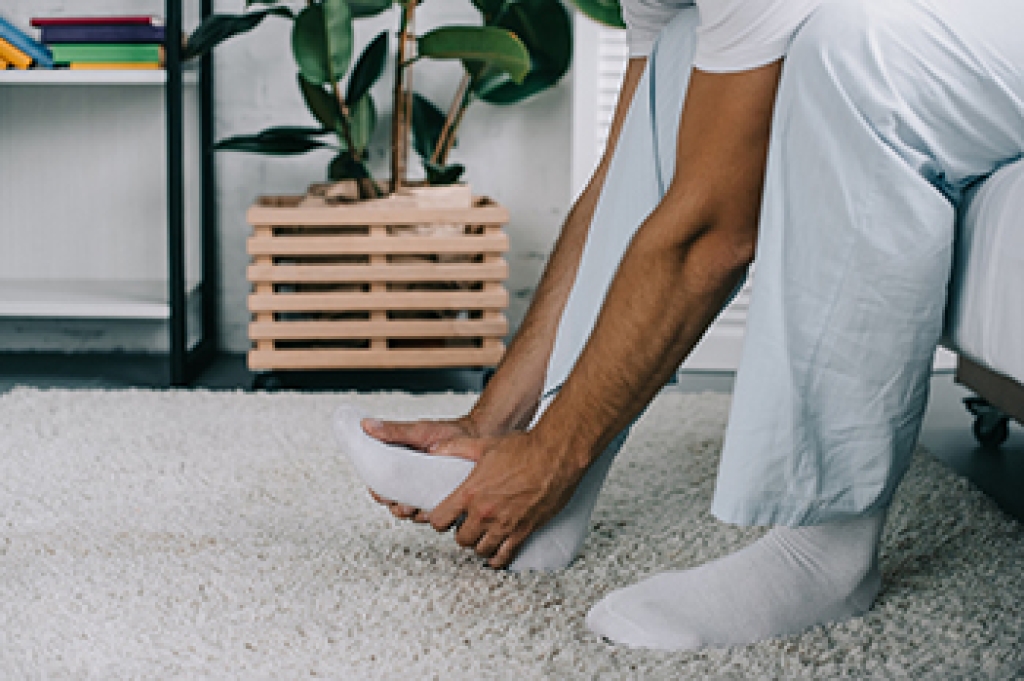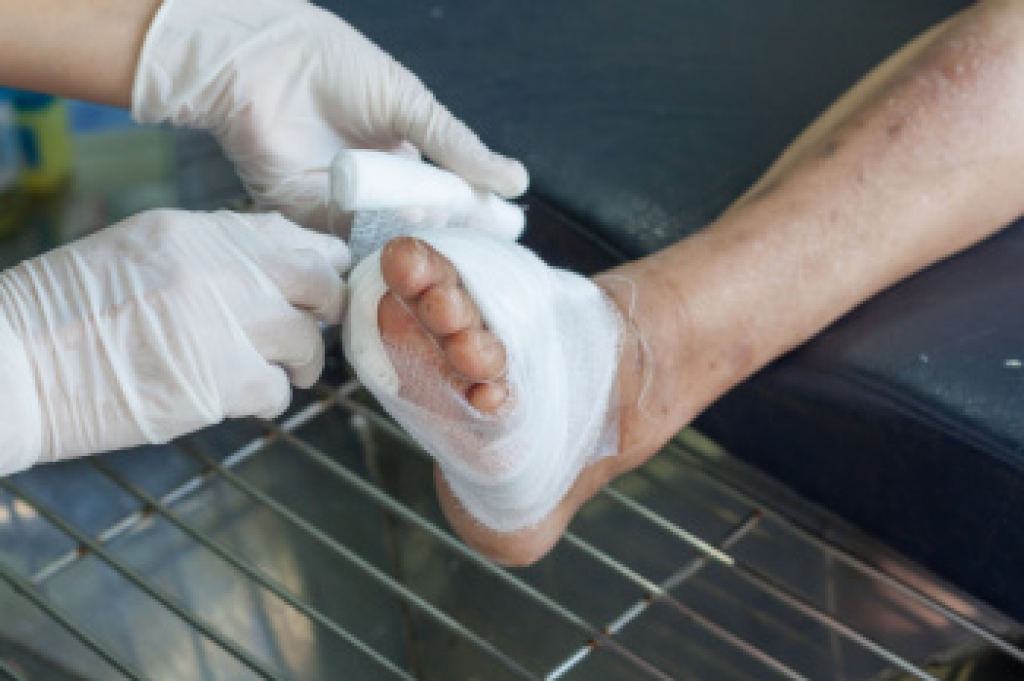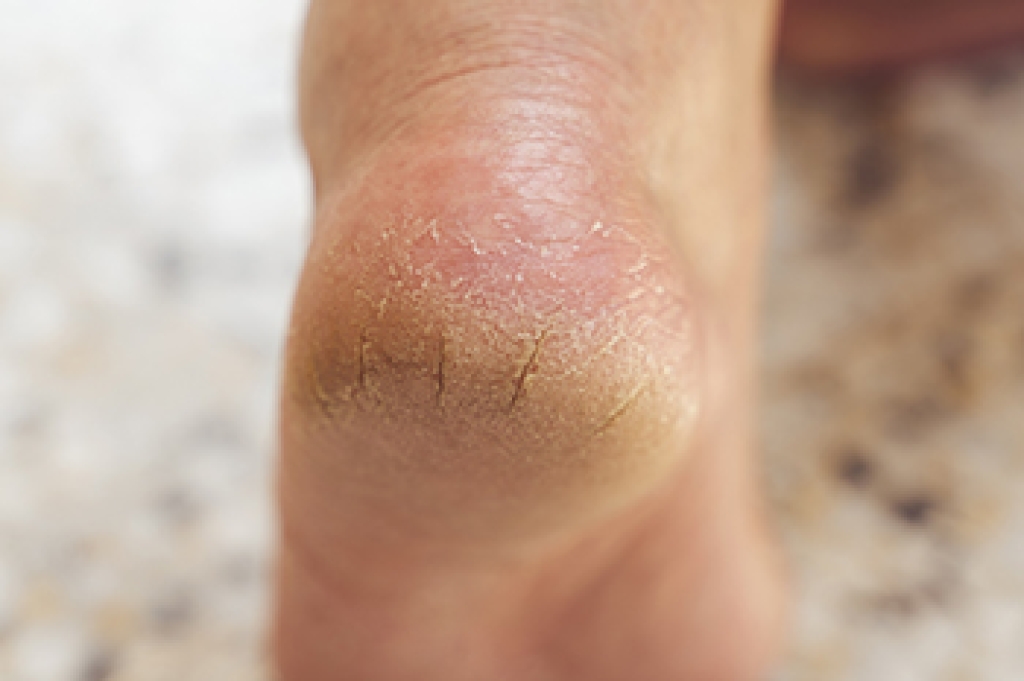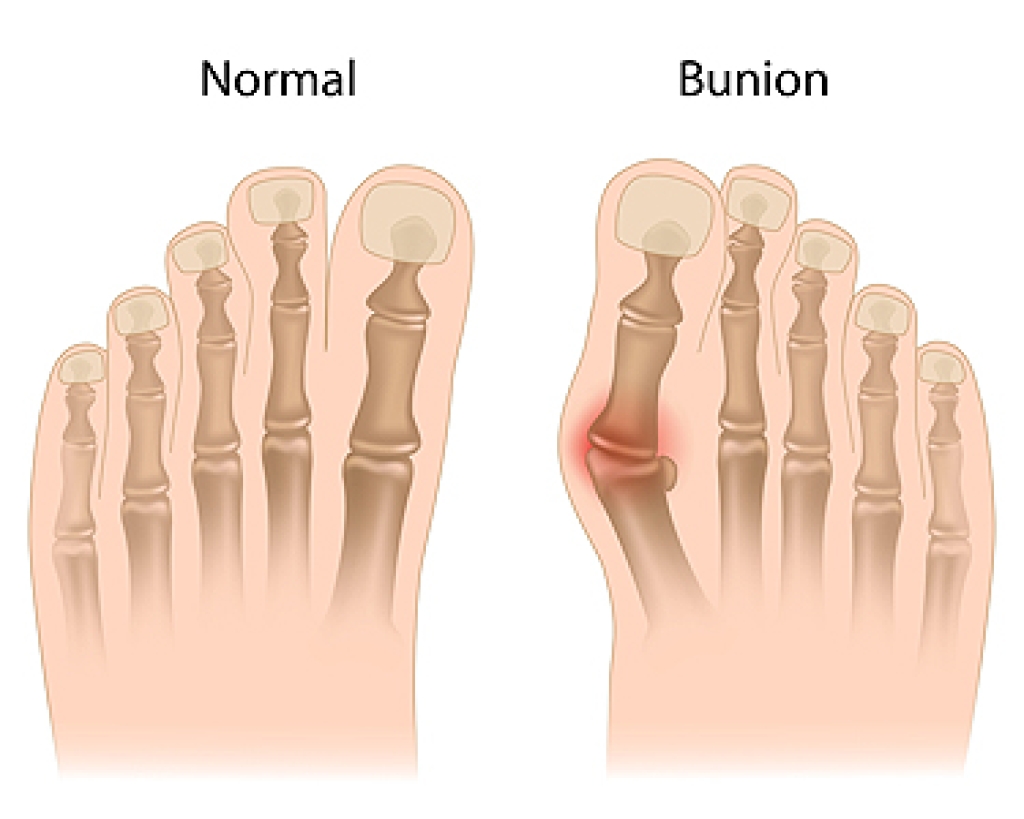Blog
Common Types of Foot Pain

Foot pain can develop from a variety of conditions that affect comfort and mobility. A bunion is a bony prominence at the base of the big toe, often caused by joint misalignment and pressure from footwear. Corns are thickened areas of skin that form due to repeated friction or pressure on the toes or soles. Gout is an inflammatory condition caused by a buildup of uric acid in the joints, leading to sudden swelling and severe pain, commonly in the big toe. Plantar warts are small growths on the bottom of the foot caused by a viral infection entering through tiny skin breaks. A podiatrist can accurately diagnose each condition, relieve pain, and provide targeted treatment and prevention strategies. If foot pain is affecting your daily life, it is suggested that you schedule a visit with a podiatrist who can provide effective relief and treatment solutions.
Foot Pain
Foot pain can be extremely painful and debilitating. If you have a foot pain, consult with Edward Fryman, DPM, FACFAOM from Seaford Foot Care Center. Our doctor will assess your condition and provide you with quality foot and ankle treatment.
Causes
Foot pain is a very broad condition that could be caused by one or more ailments. The most common include:
- Bunions
- Hammertoes
- Plantar Fasciitis
- Bone Spurs
- Corns
- Tarsal Tunnel Syndrome
- Ingrown Toenails
- Arthritis (such as Gout, Rheumatoid, and Osteoarthritis)
- Flat Feet
- Injury (from stress fractures, broken toe, foot, ankle, Achilles tendon ruptures, and sprains)
- And more
Diagnosis
To figure out the cause of foot pain, podiatrists utilize several different methods. This can range from simple visual inspections and sensation tests to X-rays and MRI scans. Prior medical history, family medical history, and any recent physical traumatic events will all be taken into consideration for a proper diagnosis.
Treatment
Treatment depends upon the cause of the foot pain. Whether it is resting, staying off the foot, or having surgery; podiatrists have a number of treatment options available for foot pain.
If you have any questions, please feel free to contact our office located in Seaford, and Bethpage, NY . We offer the newest diagnostic and treatment technologies for all your foot care needs.
Foot Problems Linked to Diabetes

Diabetes can affect the feet in many ways, often developing slowly and without obvious symptoms, at first. High blood sugar levels can damage nerves, leading to diabetic neuropathy, which causes numbness, tingling, burning, or loss of sensation. When you cannot feel pain or pressure normally, small injuries may go unnoticed and become more serious. Diabetes also affects circulation, reducing blood flow to the feet and making it harder for cuts, blisters, or sores to heal. Dry, cracked skin, thickened nails, calluses, and changes in foot shape can also occur as the disease progresses. One of the most serious complications is the development of foot ulcers, which can become infected, if not treated promptly. Regular foot checks, wearing proper footwear, and early intervention from a podiatrist can help prevent complications and protect long-term foot health. If you have diabetes, it is suggested that you see a podiatrist for foot checks on a regular basis.
Diabetic foot care is important in preventing foot ailments such as ulcers. If you are suffering from diabetes or have any other concerns about your feet, contact Edward Fryman, DPM, FACFAOM from Seaford Foot Care Center. Our doctor can provide the care you need to keep you pain-free and on your feet.
Diabetic Foot Care
Diabetes affects millions of people every year. The condition can damage blood vessels in many parts of the body, especially the feet. Because of this, taking care of your feet is essential if you have diabetes, and having a podiatrist help monitor your foot health is highly recommended.
The Importance of Caring for Your Feet
- Routinely inspect your feet for bruises or sores.
- Wear socks that fit your feet comfortably.
- Wear comfortable shoes that provide adequate support.
Patients with diabetes should have their doctor monitor their blood levels, as blood sugar levels play such a huge role in diabetic care. Monitoring these levels on a regular basis is highly advised.
It is always best to inform your healthcare professional of any concerns you may have regarding your feet, especially for diabetic patients. Early treatment and routine foot examinations are keys to maintaining proper health, especially because severe complications can arise if proper treatment is not applied.
If you have any questions, please feel free to contact our office located in Seaford, and Bethpage, NY . We offer the newest diagnostic and treatment technologies for all your foot care needs.
Cracked Heels and Cold Weather Foot Care

Cracked heels are a common foot concern that often worsens during winter when cold air and low humidity dry the skin. Hot showers can strip natural oils from the feet, increasing dryness and making the skin less flexible. Walking barefoot on hard surfaces places repeated pressure on the heel, causing thickened skin to split. Symptoms include rough texture, visible cracks, discomfort, and, in severe cases, pain or bleeding. Without proper care, cracks may deepen and raise the risk of infection. A podiatrist can assess skin health, safely remove thickened tissue, and recommend medical grade moisturizers, protective footwear, and preventive care routines. If you have developed cracked heels, it is suggested that you consult a podiatrist who can offer effective relief and treatment solutions, which may include prescribed medication.
Cracked heels are unsightly and can cause further damage to your shoes and feet. If you have any concerns, contact Edward Fryman, DPM, FACFAOM from Seaford Foot Care Center. Our doctor can provide the care you need to keep you pain-free and on your feet.
Cracked Heels
Cracked heels appear unappealing and can make it harder for you walk around in sandals. Aside from looking unpleasant, cracked heels can also tear stockings, socks, and wear out your shoes. There are several methods to help restore a cracked heel and prevent further damage.
How Do You Get Them?
Dry skin is the number one culprit in creating cracked heels. Many athletes, walkers, joggers, and even swimmers suffer from cracked heels. Age and skin oil production play a role to getting cracked heels as well.
Promote Healing
Over the counter medicines can help, especially for those that need instant relief or who suffer from chronic dry feet.
Wear Socks – Wearing socks with medicated creams helps lock in moisture.
Moisturizers – Applying both day and night will help alleviate dryness which causes cracking.
Pumice Stones – These exfoliate and remove dead skin, which allows for smoother moisturizer application and better absorption into the skin.
Change in Diet
Eating healthy with a well-balanced diet will give the skin a fresh and radiant look. Your body responds to the kinds of food you ingest. Omega-3 fatty acids and zinc supplements can also revitalize skin tissue.
Most importantly, seek professional help if unsure how to proceed in treating cracked heels. A podiatrist will help you with any questions or information needed.
If you have any questions, please feel free to contact our office located in Seaford, and Bethpage, NY . We offer the newest diagnostic and treatment technologies for all your foot care needs.
Why Do Bunions Develop?
 A bunion is a foot condition where there is a bony protrusion on the side of the big toe. It can develop as a result of genetic factors or from wearing shoes that do not have adequate room for the toes to move freely in. Larger shoes may need to be purchased for existing bunions, and it may be difficult to walk. Additionally, patients may notice the affected joint has become stiff and red, and it may be challenging to maintain balance. Specific foot stretches and exercises may be beneficial in improving general foot function by strengthening the muscles, tendons, and ligaments. Wearing custom-made orthotics may help to reduce the discomfort from having a bunion, and toe separators may help to alleviate a portion of the pain. If you have a painful bunion, it is suggested that you make an appointment with a podiatrist who can recommend treatment options, which may include surgery for permanent removal.
A bunion is a foot condition where there is a bony protrusion on the side of the big toe. It can develop as a result of genetic factors or from wearing shoes that do not have adequate room for the toes to move freely in. Larger shoes may need to be purchased for existing bunions, and it may be difficult to walk. Additionally, patients may notice the affected joint has become stiff and red, and it may be challenging to maintain balance. Specific foot stretches and exercises may be beneficial in improving general foot function by strengthening the muscles, tendons, and ligaments. Wearing custom-made orthotics may help to reduce the discomfort from having a bunion, and toe separators may help to alleviate a portion of the pain. If you have a painful bunion, it is suggested that you make an appointment with a podiatrist who can recommend treatment options, which may include surgery for permanent removal.
If you are suffering from bunion pain, contact Edward Fryman, DPM, FACFAOM of Seaford Foot Care Center. Our doctor can provide the care you need to keep you pain-free and on your feet.
What Is a Bunion?
Bunions are painful bony bumps that usually develop on the inside of the foot at the joint of the big toe. As the deformity increases over time, it may become painful to walk and wear shoes. Women are more likely to exacerbate existing bunions since they often wear tight, narrow shoes that shift their toes together. Bunion pain can be relieved by wearing wider shoes with enough room for the toes.
Causes
- Genetics – some people inherit feet that are more prone to bunion development
- Inflammatory Conditions - rheumatoid arthritis and polio may cause bunion development
Symptoms
- Redness and inflammation
- Pain and tenderness
- Callus or corns on the bump
- Restricted motion in the big toe
In order to diagnose your bunion, your podiatrist may ask about your medical history, symptoms, and general health. Your doctor might also order an x-ray to take a closer look at your feet. Nonsurgical treatment options include orthotics, padding, icing, changes in footwear, and medication. If nonsurgical treatments don’t alleviate your bunion pain, surgery may be necessary.
If you have any questions, please feel free to contact our office located in Seaford, and Bethpage, NY . We offer the newest diagnostic and treatment technologies for all your foot care needs.

